#1449;di&
Text
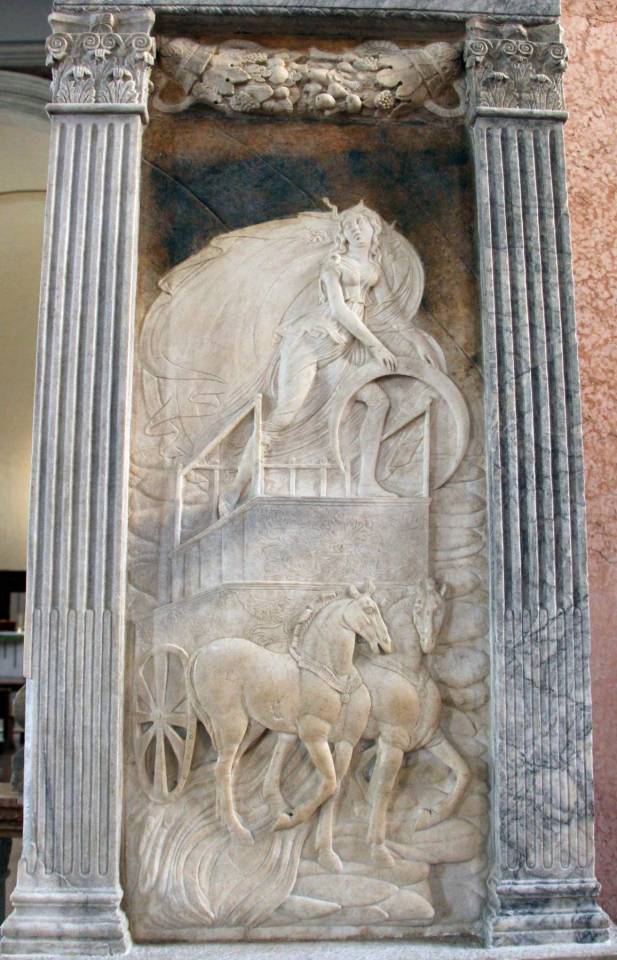
AGOSTINO DI DUCCIO
Cappella dei Pianeti (detail)
1449-56
Photo
Tempio Malatestiano, Rimini
69 notes
·
View notes
Text
Umar رَضِيَ اللهُ عَنْهُ once said to Al-Ahnaf Ibn Qais:
"Oh Ahnaf, the more one laughs, the less dignity will he posses. Whoever jokes (excessively/ indecently) is a person who will be taken lightly.
Whoever does something frequently will become known by that thing.
Whoever speaks often, errs often; the more often one errs, the less modesty will he possess; whoever has a low level of modesty will also have a low level of piety; and when one has a low level of piety, then his heart dies."
[Sifatus- Safwah, 1/1449]
#islam#quote#allah#hijab#knowledge#inspirational quotes#islam4 life#islamicadvice#jilbab#la ilaha illa allah#islamicreminder#islamicart#islamicquotes#islamic#hadith#quranic#quran online#quran kareem#holy quran#quran
22 notes
·
View notes
Text
new fic alert! woooooooo!!!
little soap character study for the monster witch au which is set in a non linear perspective so this takes place much later in the timeline but i really wanted to write it so here we are
SUMMARY: Soap comes to a realization why all the witches died out, and walks the line of self-sacrifice and suicide.
WORD COUNT: 1449
#ghoap#soap cod#cod modern warfare#ao3 writer#ghost cod#ghostsoap#john soap mactavish#simon ghost riley#soapghost#ghost soap#ghost x soap#soap x ghost#ghoap fic#ghostsoap fic#soapghost fic#witch soap#vampire ghost#this au is rotting my brain#so fucking bad#monster cod au#ao3 link#monster magic au
23 notes
·
View notes
Text

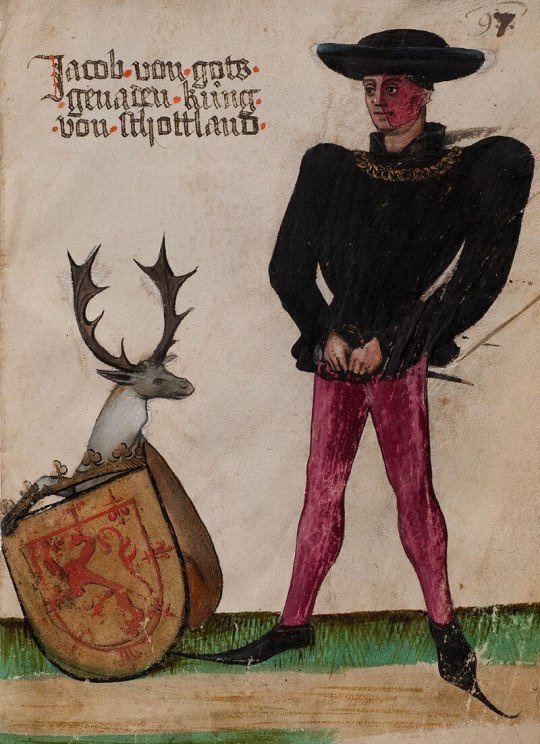

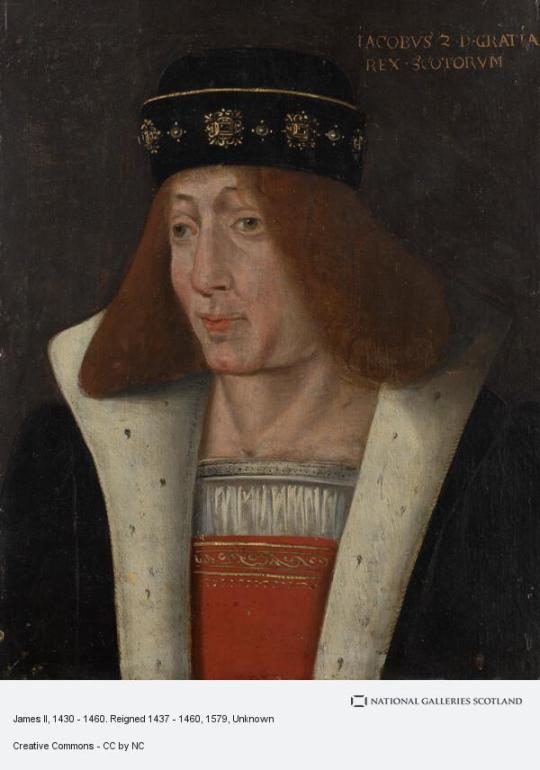

On March 25 1437, James II was crowned at Holyrood Abbey, cue more bloodshed stories!
James became king in 1437 after the murder of his father. His minority years saw much bloodshed as rival factions vied to control Scotland through controlling the young king. His reign would be characterised by his fiery temperament and his struggle to break the power of a leading clan and assert his own control over Scotland.
Immediately after the death of his father, James' mother, Queen Joan, organised the murder of the rival branch of the Stewart clan who had murdered her husband. The violence that marked the start of his reign did not stop there, however.
In 1440 the two main factions fighting for control of the boy king turned to slaughter. William Crichton and Alexander Livingston arranged a meeting with their rivals, the powerful Douglases, at Edinburgh Castle. With the young king present, Crichton and Livingston murdered the 6th Earl of Douglas and his younger brother in a notorious evening that would become known as the Black Dinner, a gruesome story I love, go look it up in the groups search box on the top right, remember to put in the inverted commas like "Black Dinner"
Despite the murders, the Douglases came to dominate the Scottish court, filling the major offices and posts of government with their family and supporters. When James finally assumed the role of governing Scotland by himself in 1449 he found that the Douglas clan had a stranglehold on power that they would not give up lightly.
James spent much of his reign attempting to break the Douglases. Typically for his reign, this involved murder in an evening that would echo the Black Dinner some nine years earlier.
Despite the murders, the Douglases came to dominate the Scottish court, filling the major offices and posts of government with their family and supporters. When James finally assumed the role of governing Scotland by himself in 1449 he found that the Douglas clan had a stranglehold on power that they would not give up lightly.
James spent much of his reign attempting to break the Douglases. Typically for his reign, this involved murder in an evening that would echo the Black Dinner some nine years earlier.
James died when his love of cannons backfired on him, literally, at Roxburgh Castle in 1460. According to Robert Lindsay of Pitscottie, writing a hundred years later, his thigh was snapped in two and he was ‘stricken to the ground and died hastily’. He was 29 .
10 notes
·
View notes
Photo
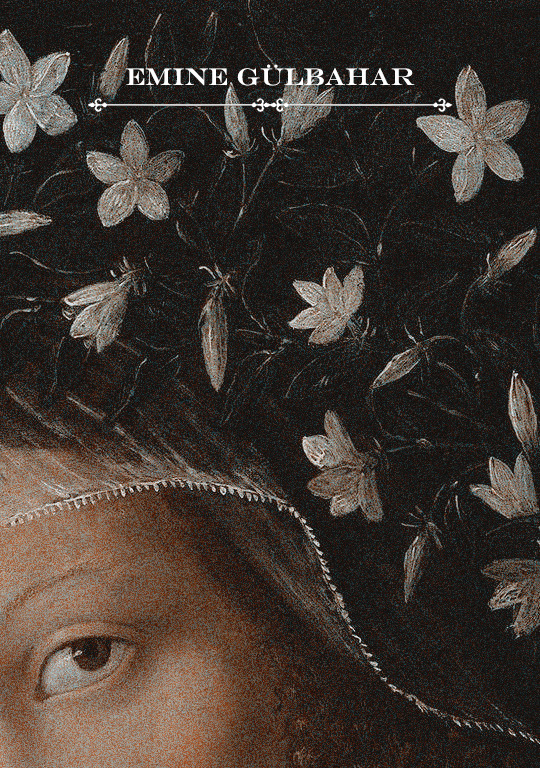


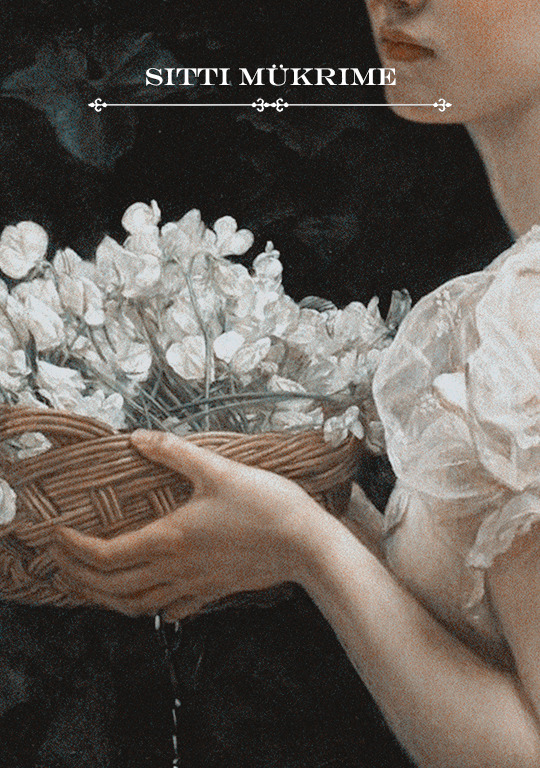




Mehmed II Conqueror + consorts (pictures are for aesthetic)
Emine Gülbahar Hatun — was a favourite consort of Sultan Mehmed II. In most sources she is referred as non-muslim slave who was converted to Islam after her arrival to the harem. There is no agreement on her origins some historians think she was Pontic Greek, Albanian or lowly Slavic. She was the mother of the future Sultan Bayezid II and Gevherhan Hatun. She died circa 1492 and was buried in her mausoleum inside the Fatih Mosque next to her late husband.
Çiçek Yagmur Hatun — was a wife or consort of Sultan Mehmed II. According to some sources she could have been Turkish noblewoman or Serbian, Greek, Venetian, French slave. She entered the harem or married Mehmed at Constantinople and gave birth to her only son Şehzade Cem (Ottoman claimant Sultan) on 22 December 1459. It is not known the degree of influence she had during Mehmed’s reign or if she even was favoured by him. She died on 3 May 1498 of plague and was buried in Cairo.
Hatice Hatun — was a thrid legal wife of Sultan Mehmed II. She was a possible daughter of Zaganos Mehmed Pasha. In 1463 she became Mehmed's third legal wife. After her husband death she remarried with a statesman.
Sitti Mükrime Hatun — was a Turkish Princess and first legal wife of Sultan Mehmed II. Her father was Süleyman Bey the sixth ruler of Dulkadir State. When Mehmed turned seventeen he married her for political purposes. Her possible offspring is unknown. Due to her middle name Sittişah is sometimes confused with Gülbahar Mükrime Hatun another consort of Mehmed. She died in September 1486 and was buried in a mausoleum built inside her mosque.
Helena Palaiologina — was a possible wife of Sultan Mehmed II. Her entering the Sultan's harem is controversial and remain unconfirmed. She was a daughter of the Despot of Morea Demetrios Paleologos the brother of Constantine XI Palaiologos the final Byzantine emperor and Theodora Asanina the daughter of Paul Asan. Some rumors says Mehmed II asked for her after his campaign in Morea having heard of her beauty. Probably he never bedded with her because he was afraid she would poison him. In another case Helena was provided with a pension and large estate at Adrianople by the Sultan though she was forbidden to marry. She died of unknown causes in 1469 or 1470 in Edirne.
Gülşah Hatun — was a second legal wife or consort of Sultan Mehmed II. There is no informations about her origins. She married Mehmed or entered his harem in 1449 when he was still a Prince and the governor of Manisa. Shortly before Murad’s II death she gave a birth to her only son Şehzade Mustafa and followed him to Konya when he became governor of the province. She died circa 1487 and was buried in Bursa in the tomb she had built for herself near that of Mustafa.
Maria Hatun — was a consort of Sultan Mehmed II. Before she entered Mehmed’s harem she was a widow of Alexander Komnenos Asen. According to some sources she was judicated as the most beautiful woman of her age. Some historians claims she could be more likely Murad’s II concubine than Mehmed’s.
Anna Hatun — was a consort of Sultan Mehmed II. Her parents were Trabzon Greek emperor David Komnenos and Helena Kantakuzenos. The marriage was initially proposed by her father, but Mehmed refused. Nontheless when Trabzon was taken in 1461 Anna entered the harem and stayed there for two years after which Mehmed married her off to Zaganos Mehmed Pasha.
#ottoman history#mehmed ii#consort#gulbahar hatun#cicek hatun#helena hatun#hatice hatun#maria hatun#sitti hatun#anna hatun#ottoman empire#aestehtic#history#historyedit#sultanate#wives#myedit#ottoman ladies
109 notes
·
View notes
Text

MWW Artwork of the Day (12/4/23)
Scheggia [Giovanni di ser Giovanni Guidi](Italian, 1406–1486)
The Triumph of Fame (c. 1449)
Tempera, silver & gold on wood, 62.5 cm.
The Metropolitan Museum of Art, New York (Rogers Fund)
This commemorative birth tray (desco da parto), celebrates the birth of Lorenzo de' Medici (1449–1492), the most celebrated ruler of his day as well as an important poet and a major patron of the arts. Knights extend their hands in allegiance to an allegorical figure of Fame, who holds a sword and winged cupid (symbolizing celebrity through arms and love). Winged trumpets sound Fame's triumph. Captives are bound to the elaborate support. The three-colored ostrich feathers around the rim are a heraldic device of Lorenzo's father, Piero de' Medici. Painted by the younger brother of Masaccio, it was kept in Lorenzo’s private quarters in the Medici palace in Florence.
15 notes
·
View notes
Text
#OTD in Irish History | 21 October:
1449 – Birth of George Plantagenet, 1st Duke of Clarence, in Dublin Castle at a time when his father, the Duke of York, had begun to challenge Henry VI for the crown. His godfather was James FitzGerald, 6th Earl of Desmond. He was the third of the four sons of Richard and Cecily who survived to adulthood. His father died in 1460. In 1461 his elder brother, Edward, became King of England as Edward…

View On WordPress
#irelandinspires#irishhistory#OTD#21 October#Anthony Murphy Photography#Battle of Trafalgar#Co Meath#Gerry Adams#History#History of Ireland#Ireland#Irish History#Irish National Land League#Martin McGuinness#Newgrange#Sinn Fein#Today in Irish History
15 notes
·
View notes
Text
Most written theater on AO3
I got bored and did this. Since AO3 separates these alphabetically and by numbers, each is the most written for of their section. I ordered them according to number of fics. This is accurate as of 4/15/2023 at 10:12 am. Beyond that? Probs not! FYI This is nonsense made out of curiosity. Again i was just super bored and made a list.
Les Miserables - 24861
Hamilton – 20337
Be More Chill – 7525
Newsies – 6389
Dear Even Hanson – 5672
Phantom of the Opera – 4947
SHAKESPERE William – Works – 4903
Romeo and Juliet - 2366
Cats – 1449
Wicked - 1444
In The Heights – 918
The Prom - 855
Anastasia – 676
Elizabeth – 548
Jesus Christ Superstar – 509
Love Never Dies – 441
Tanz Der Vampire – 379
Kuroshitsuji – 238
A Very Potter Musical Series- 180
Orthello – 172
9 to 5 – 88 (I counted all the numbers as a single section)
Ghost Quartet – 85
The Magic Flute - 39
Urinetown – 20
YANK! - 14
Quidam – 7
Xanadu & Xi Tai Trilogy - 2 (There is only two productions in this section and they tied)
According to this, Les Mis and Hamilton fans are extremely productive. Most theater works on AO3 is you guys, hands down! Also, HEY, CIRQUE DU SOLEIL! I SEE YOU, QUIDAM, SQUEEZING IN AT THE BOTTOM THERE, MY LOVELY! AND CATS, MY BELOVED! Sneaking into the top 10 and beating Wicked by five. Good for you, Cats Fandom!
28 notes
·
View notes
Text









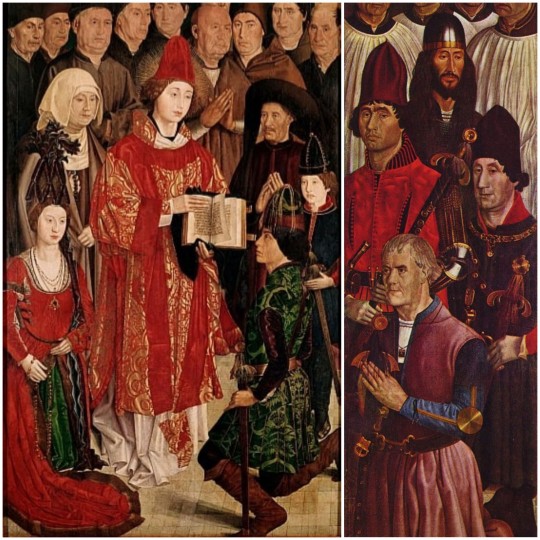
The Bastard Kings and their families
This is series of posts are complementary to this historical parallels post from the JON SNOW FORTNIGHT EVENT, and it's purpouse to discover the lives of medieval bastard kings, and the following posts are meant to collect portraits of those kings and their close relatives.
In many cases it's difficult to find contemporary art of their period, so some of the portrayals are subsequent.
1) John I of Portugal (1357 – 1433), son of Peter I of Portugal and Teresa Lourenço; with his wife, Philippa of Lancaster (1360 – 1415), daughter of John of Gaunt and his wife Blanche of Lancaster
2) His father, Peter I of Portugal (1320 – 1367), son of Afonso IV of Portugal and his wife Beatrice of Castile
3) His sister, Beatrice of Portugal (c. 1354–1381), daugther of Peter I of Portugal and his wife Inês de Castro
4) His brother, John of Portugal (1352 – c. 1396), son of Peter I of Portugal and his wife Inês de Castro
5) His brother, Ferdinand I of Portugal (1345 – 1383), son of Peter I of Portugal and his wife Constanza Manuel de Villena
6) His sister in law, Leonor Teles de Meneses (c. 1350 – c. 1405), daughter of Martim Afonso Telo de Meneses and his wife Aldonça Eanes de Vasconcelos
7) His niece, Beatrice of Portugal (1373 –c. 1420), daughter of Ferdinand I of Portugal and his wife Leonor Teles de Meneses
8) His niece, Isabella of Portugal (1364–1395), daughter of Ferdinand I of Portugal and an unknown woman
9) His daughter with Philippa of Lancaster, Isabella of Portugal (1397 – 1471)
10) Left:
I. Eleanor of Aragon (1402 – 1445), daughter of Ferdinand I of Aragon and his wife Leonor de Albuquerque; and wife of Edward I of Portugal
II. Isabella of Coimbra (1432 – 1455), daughter of Peter of Portugal and Isabella of Urgell; wife of Afonso V of Portugal
III. Edward I of Portugal (1391 – 1438), son of John I of Portugal and his wife Philippa of Lancaster
IV. John II of Portugal (1455 – 1495), son of Afonso V of Portugal and his wife Isabella of Coimbra
V. Afonso V of Portugal 15 (1432 – 1481), son of Edward I of Portugal and his wife Eleanor of Aragon
Right:
I. Ferdinand of Portugal (1402 – 1443), son of John I of Portugal and his wife Philippa of Lancaster
II. John of Portugal (January 1400 – 1442) son of John I of Portugal and his wife Philippa of Lancaster
III. Peter of Portugal (1392 – 1449), son of John I of Portugal and his wife Philippa of Lancaster
IV. Henry of Portugal (1394 – 1460), son of John I of Portugal and his wife Philippa of Lancaster
Note: In the last picture, the Panel of the Prince or the Infante and the Panel of the Knights from Nuno Gonçalves' St. Vincent Panels, the identity of some of the members of the Royal family it's still discussed, like the man identified as Edward I in the Panel of the Prince is his brother Henry, but we're considering the interpretation of the people of the panel being Afonso V with his parents, wife and heir, and the ones of the Panel of the Knights are Edward I's brothers, although by the time the panels were painted most of them have already died.
#jonsnowfortnightevent2023#asoiaf#a song of ice and fire#day 10#echoes of the past#historical parallels#medieval bastard kings#bastard kings and their families#john i of portugal#philippa of lancaster#peter i of portugal#ferdinand i of portugal#beatrice of portugal#john of portugal#isabella of portugal#eleanor of aragon#edward i of portugal#john ii of portugal#afonso v of portugal#leonor teles de meneses#isabella of coimbra#peter of coimbra#canonjonsnow
11 notes
·
View notes
Text
like my mirror years ago
Rating: T
Characters: Maedhros | Maitimo
Additional: Years of the Trees, time travel, AU, fix-it
WC: 1.3k
Maitimë’s first thought, when she sees the stranger, is that one of the orcs from Grandfather Finwë’s stories has somehow found its way to Valinor.
She’s never seen anyone like them before. Their hair is cropped short, too short to braid at all, and their face and what little other pale skin is visible is covered in cruel scars, the origin of which she can’t begin to imagine. Their right hand is missing entirely, with only a stump left. They’re wearing armor, similar to what Atar and some others have been experimenting with, but heavier and clearly much-used.
They’re also wearing the particular shade of red associated with her father’s house, with - she sees when they turn - her father’s sigil of the eight-pointed star worked into the tattered cloak in gold.
She sucks in a startled breath at that, trying to reevaluate, and that makes the stranger turn sharply, their sharp eyes spotting Maitimë where she’s partially hidden behind a tree.
“Who’s there?” the stranger says, their voice rough and rasping.
She has nothing to fear. She doesn’t. This is Valinor and they are safe, and if the stranger tries anything, Maitimë is fairly certain she can outrun them. And she isn’t anywhere that she’s not supposed to be; they are. So she comes out from behind the tree and says, “I’m Nelyafinwë Maitimë Fëanáriel. What are you doing skulking outside Tirion?”
It’s not necessarily an intimidating proclamation, but the stranger staggers back as though she struck them. Their mouth hands open a long moment, and then they curl in on themselves, head in their hands, muttering “no, no, no, no” over and over.
Maitimë, beginning to be more concerned than wary, takes a couple of steps closer. “Are you all right?”
The stranger lets out a harsh, barking laugh. “I haven’t been all right since around the year 1450 by Trees reckoning.”
That doesn’t make sense. Maitimë frowns. “It’s the year 1449 right now.”
A disbelieving pause, and then another snort of unamused laughter. “Of course it is. That makes the most sense out of any of this.”
“I beg your pardon?”
The stranger lifts their head, fixing Maitimë with gray-green eyes that are suddenly all too familiar. “I’m from about sixty Valian years in the future. Specifically, I’m you from the future.”
It’s impossible. Maitimë wants to deny it, but now that she looks, those are her eyes, and the cropped hair is her color, although very dirty and neglected. That is the shape of her face, albeit a little leaner, under all the scars.
“I can prove it,” the stranger says after a moment. “You said your name was Nelyafinwë Maitimë before, but that’s not the whole truth, is it? Fing - Findekáno gave you another one. Russandol. You haven’t told anyone yet because then you’d have to explain that the two of you are in love, and you’re waiting for things between your fathers to get a bit better before you break that news.” She huffs. “Trust me, you’ll be waiting forever on that one. If you really want to be with him, you should just do it, take advantage of the time you have.”
Maitimë finds that she has to sit down abruptly. Fortunately, there’s a convenient mossy boulder nearby. “What happened to you?” she says, when she can find words again. “To us, I mean?” She gestures to encompass everything about the person in front of her.
“What didn’t happen?” The stranger - future-Maitimë - drops to sit on the ground. “Mor - Melkor killed Grandfather for a treasure that Atar had made. Atar dragged us - most of the Noldor, my brothers, and me - across the Sea bent on revenge and made the seven of us swear an oath to bind us to it. We killed a lot of the people of Alqualondë, for their ships. Atar died and left the crown to me, which led to me being captured by Melkor and tortured for three Valian years. Findekáno saved me, in the end - that’s how I lost the hand, by the way. We fought a prolonged, hopeless war against Melkor, that ended up killing most of our cousins, Nolofinwë, and finally Findekáno - that last was my fault, by the way, and it was ugly and brutal and --”
She breaks off, running a hand through her cropped hair repeatedly until she calms. Distantly, through the haze of horror at such a recitation, Maitimë wonders if she cut it after Findekáno’s - after he --
“My brothers and I went on to kill Eldar twice more after that,” future-Maitimë continues, with terrifying matter-of-factness. “Simply because they were between us and Atar’s treasure. Most of them died in the doing of it - Tyelko, Moryo, and Curvo first, and then Pityo and Telvo later on.”
“Kano lives?” Maitimë finds herself asking. Her heart had already crumbled to hear of Findekáno’s fate, and shattered further at the thought of her little brothers being killed, a concept she can barely hold in her mind, but she needs to know that at least Makalaurë is spared in this ugly future.
“He lives.” Her other self won’t meet her eyes. “And so if I return to my proper time, I may yet lead him into further evil.”
The resignation in her voice sparks something in Maitimë. “You don’t know that it has to be that way,” she says. “Now that you’ve told me, I can make sure none of those things happen. There must be something I, we, can do to prevent all that.”
“There’s not.” Future-Maitimë folds her arms tightly. “I’m here, proof that the future I described happened. I may not have been much for Finr - Findaráto’s philosophical salons, but basic logic would seem to indicate that therefore, the events I’ve spoken of can’t be changed.”
Maitimë gets to her feet, resolve building. “You’ve come back through time,” she argues. “Basic logic doesn’t seem to be in effect at this point. We might as well try.”
“You can if you want,” her future self says, not moving from her seat on the ground. “Perhaps this is some kind of punishment for all I’ve done, to have to watch you try and fail.”
Well, that’s not going to help anything - and Maitimë is quite certain she can’t do this on her own. But that thought stirs an idea up in her. If this really is her from the future...and judging by some of the things she said...
“I am still going to try, though,” she says, turning to walk back towards Tirion. “And I’ll probably need some help to come up with a plan, so I’m going to find Findekáno. He’s good with impossible projects - in this time, anyway.”
She keeps one eye on her future-self as she speaks, and sure enough, those ruined lips move, silently framing something like Finno...
“All right.” She stands, and Maitimë suppresses a triumphant grin. “I still don’t think this is going to work, but...I want to see him. At least for a moment.”
“Excellent.” Maitimë reaches out and takes her remaining hand - rough and callused, but still essentially the same as her own. “You might want to pull up your hood and wrap your cloak close if you don’t want to be spotted. Oh, and is there something I can call you? Two ‘Maitimë’s is going to get confusing.”
Her future-self cracks a one-sided grin. “Fortunately for you, we all had to take new names when we met Elwë’s people on the other side of the Sea - they speak quite a different language by now. You can call me Maedhros.”
“Maedhros.” It feels rough and clumsy in Maitimë’s mouth, but somehow it suits her. “All right. Let’s go see if we can change the future.”
To be continued...
#silmarillion#maedhros#female maedhros#fem!maedhros#au of roots#eden timeline#my stories#time travel#meeting your future self and it's not a great time#this should have subsequent installments
6 notes
·
View notes
Text
SAINT OF THE DAY (June 18)

St. Osanna was a Dominican tertiary who spent her adult life serving the poor and the sick and offering spiritual direction to many.
However, she was also a mystic and a visionary, eventually bearing the pain and red marks of the stigmata, though not the bleeding.
She was born on 17 January 1449 to a noble Italian family.
Her visions, first of angels and of the Trinity, began at the young age of five.
She felt a call to religious life and became a tertiary at 17, having already rejected a marriage arranged by her father.
In 1463, at the age of 14, unable to explain her attraction to religious life to her father, she secretly received the religious habit of the Third Order of St. Dominic.
Returning home, Osanna explained that she had made a religious vow and had to wear it until she had fulfilled her promise, which is an ancient custom.
She waited 37 years to complete her vows, so she could care for her brothers and sisters after the death of her parents.
A legend states that Osanna, like Catherine of Siena, miraculously learned to read and write.
One day, she saw a piece of paper with two words and said, "Those words are 'Jesus' and 'Mary.'"
Allegedly, from that time on, anything relating to the spiritual was within her grasp.
When Osanna was thirty years old, she received the stigmata on her head, her side and her feet.
She also had a vision in which her heart was transformed and divided into four parts.
For the rest of her life, she actively experienced the Passion of Jesus, but especially intensely on Wednesdays and Fridays.
She was also a mystic who would fall into ecstasies whenever she spoke of God and a visionary who saw images of Christ bearing his cross.
She bore stigmata along with red marks, but there was no bleeding.
Moreover, she helped the poor and the sick. She then served as a spiritual director, spending much of her family's considerable fortune to help the unfortunate.
She spoke out against decadence and criticized the aristocracy for a lack of morality.
She died on 18 June 1505.
8 notes
·
View notes
Text

Movies I watched this week (Year 4, week 5)
6 more by Icelandic Hlynur Pálmason (After ‘Godland’ and ‘Seven Boats’):
🍿 White, white day is about a grieving policeman whose wife died in a car accident. A masterful feat of slow film making, with unusual choices in its subtle direction. The man renovates a house, takes care of his cute granddaughter, and then, (as in 'The Descendants'), he discovers that before she died, his beloved wife had an affair with some guy. A stunning story of grief, resignation and acceptance. 10/10.
🍿 A painter is a 30-minutes unexplained riddle, about a conceptual land artist, harsh and isolated. A slow meditation about art and relationships, told via stark visuals and few words.
🍿 During Corona, Hlynur's 3 kids were building a tree house in Nest. The camera was fixed at one spot (in 99% of the cases) and recorded hundreds of short clips over a full year of changing seasons. It's absolutely the most captivating 22 minutes of film I've seen this week. (Pálmason used the same technique at the beginning of 'White, white day' recording the house over a long period of time). 10/10 (In spite of watching it with Spanish subtitles only).
🍿 A day or two, a painful, lyrical short about a boy who is left alone in a neglected farmhouse. Inexplicably traumatic. 9/10.
🍿 Milk Factory is basically a home movie with the same little cute girl (his daughter from 'Godland' and all the others) running through a modern gallery at the small fishing town of Höfn, where they live.
🍿 Fortunately, I saved his debut feature Winter Brothers to the very end. Had I started with this tedious, incomprehensible artsy piece first, I would never have discover the rest of his fascinating work. The story takes place in a metaphorical underground, a Siberian-type inferno, where chalk-faced miners use pickaxes and shovels to dig for something in darkness and noise. 2/10.
Now that I've seen everything he's done, 3 features and 5 shorts, my top three of his are: 1. A white, white day. 2. Nest. 3. Godland.
🍿
Like the little heartbroken girl in 'White, white day', mourning the death of her grandmother, (and like the kids in the Danish 'Beautiful Something Left Behind'), Ponette is a 4-year-old girl who must come to terms with her mother's death in a car accident. (Photo Above). This sad and simple story features the most phenomenal performance by a child actress I've ever seen. The grief on her face was absolutely devastating and hard to watch. It's also hard to imagine how the director, Jacques Doillon, managed to coax such genuine emotions during the unbroken, long takes. 9/10.
🍿
Exterminate All the Brutes, a 4 hour meditation about the roots of colonialism, racism and genocide. My first by Haitian documentarian Raoul Peck. An unflinching examination of the shameful atrocities on which our modern life is established. The many genocides that followed the European conquests of the world. The twin principals on which the Americas were founded; Extermination of all the native nations, and the exploitive slavery of kidnapped Africans. Painful truths.
There were some chapters I did not know: That White supremacy was codified for the first time in 1449 with the help of the pope, the king and the Spanish Inquisition. That the first successful slave revolt against colonialism was the Haitian Revolution of 1791. That the Code-name 'Geronimo' used for the killing of Bin Laden was simply one more time of using Indian names for America's worst enemies, all part of the need to 'Exterminate all the brutes'.
The documentary itself was in parts too fragmentary, used too many symbolic reenactments, and employed too many personal anecdotes, for my taste. Still, it's a must see warning. Trump makes his entry only at the last hour. 7/10.
🍿
Only my second by independent writer-director John Sayles (after 'Lianna'), the neo-western Lone star. Real stories of the Anglo, Tejano, and Black communities in a small Texas border town. Also a new sheriff who investigates an old skeleton found at a firing range, and discovers old secrets about his dad and his old sweetheart. Unforgivably humane.
🍿
Gun Crazy, a second-tiered, pulpy Film Noir, a precursor to Bonnie & Clyde and any other 'Outlaw couple on the run' stories. He's obsessed with guns since his childhood. She's high on deadly adventures. After falling in love at a carnival, they embark on a crime spree across America together. In 1950 that mean that the murderous fugitives will die at the end. Strangely, this urban crime caper ends in a dreamy Tarkovski swamp.
🍿
Another Noir, Elia Kazan's medical thriller Panic in the Streets, taking place on the waterfront, this time in New Orleans. Jack Palance debut performance. I watched it after reading the article The Myth of Panic, which analyses how the 'Elites' uses the fear of 'the crowd' to always control narratives in times of mass disasters, The Spanish influenza, The London Blitz, the Atomic age, AIDS, Corona...
🍿
Falcon lake is the charged debut feature of Canadian Charlotte Le Bon. It's a lovely coming-of-age story about a 13 year old boy who falls for a 16 year old girl at a lake cottage in Quebec. He's innocent and caring, until he fucks up and becomes a ghost. Accomplished film making with an indecisive finale. 7/10.
*Woman Director
🍿
"Goddamn-dipshit-Rodriguez-gypsy-dildo-punks. I'll get your ass."
First watch: LA cult movie Repo Man. I guess you had to be there at the time to appreciate its weird punkness. But even though I stuck to the very bitter end, every moment made it worse. Rambling, disjointed, uninteresting. 2/10.
🍿
Junk mail, a grimy Norwegian Noir about a lowly postman who doesn't give a shit: He throws away the mail he doesn't want to deliver, he's shabby and dirty, he stalks a deaf girl and hides in her apartment. And he always steals bites of food from everywhere. But then he gets involves with some robbers and murderers, and saves the girl from suicide. Oslo looks disgusting here. 3/10.
🍿
Leonor Will Never Die, my first meta-film from The Philippines. A different standard told in a different film syntax, which unfortunately left me baffled. An elderly lady who used to be a famous scriptwriter in the golden age of Pinoy Cinema of the 1980's, but now lives in the slums and can't pay her bills, is getting hit on the head by a television set that her upstairs neighbor throws out of the window. While in coma, she re-writes and re-lives her unfinished manuscript, a low-low-brow action movie, and even plays the main character in it. Weird to say the list, but with a surprising dance and song routine at the end which was wonderful. 2/10.
*Woman Director
🍿
2 from screenwriter Etan Cohen, both about dim-witted morons:
🍿 "Whatever you do, keep painting!... "
Another re-watch: Mike Judge's prescient satire Idiocracy, a movie tinged with enough criticism of late-stage capitalism, that Fox C21 decided to abandon, rather than promote it. Featuring real brands like 'Flaturin', 'If you don't smoke Tarrlytons - Fuck you!' 'Crocs, they are so dumb. Could you imagine those ever getting popular?', 'Buttfuckers restaurant'. As well as the actual line 'He's gonna make them grow again'.
Funniest lines from Wikipedia: "Rita, a street prostitute" has been "in a relationship with Paul Thomas Anderson since 2001. They live in the San Fernando Valley with their four children."
🍿 My wife is retarded, a one-note, low-brow, offensive premise played for laughs, and repeated more than a dozen times in the span of 10 minutes. With 'Bill Lumbergh'. 2/10.
🍿
"Nothing about Barcelona?"...
Another Guilty Pleasure Re-watch: Steven Soderbergh's fast action Haywire. A convoluted spy plot, with a female Jason Bourne assassin, and kick-ass hand-to-hand fight scenes.
🍿
2 NYC shorts co-directed by Ellie Sachs:
🍿 In Proof of concept an aspiring auteur tries coaxing her dad and Richard Kind, her uncle, into financing her first short film. Cute.
*Woman Director
🍿 My Annie Hall, a wholesome 30-minute remake of 'Annie Hall' starring seniors citizens. The 94-year-old Alvin (and 73-year-old Annie) had all the quirkiness of the originals without the unpleasant personal baggage. 7/10.
*Woman Director
🍿
And the King Said, What a Fantastic Machine is a new documentary about 'The power of the Photograph', produced by Ruben Östlund. It started promisingly with a few minutes of Camera Obscura, and the first ever 1826 photograph by Nicéphore Niépce, but the rest of the time it just jammed hundreds of random clips and images from the internet into fast-moving soup with no depth. 1/10.
🍿
"There is a grown-up way to eat watermelon!"
Everything Is Terrible, The Movie (2009) was an older but much funnier montage. A cynical compilation of bizarre and obscure clips found in long forgotten VHS tapes, it just fast-edited hundreds of ridiculous tidbits from the 80's and 90's into a dumb and absurd mishmash. Much better!
🍿
"Don't forget me". Some YouTube essayist's 'Falling down' was propaganda. In spite of not being a fan of such essays, it was an insightful 44 minute analysis. Diving into sociological and historical background trying to prove that DFENS descent into villainy had some very valid reasons. It end with Plato's 'The noble lie'. (Even the YouTube comments were intelligent, for the most part.)
Apparently, there are many similar essays on the same topic!
🍿
Another unfathomable documentary about the central role the "New Apostolic Reformation" played in instigating the Capitol riot of January 6th. Spiritual Warriors: Decoding Christian Nationalism at the Capitol Riot. Also about C. Peter Wagner, and 'Jericho Marches' and 'Blowing of the Shofars'. Religious fruitcakes are the worst of all nutjob crazies. Mental illness of prophetic levels.
🍿
(My complete movie list is here)
2 notes
·
View notes
Text

Dorotea Gonzaga (6 December 1449 – 20 April 1467) was a Duchess Consort of Milan. She was the daughter of Ludovico III Gonzaga, Marquess of Mantua and Barbara of Brandenburg. In 1466, Dorotea married Galeazzo Maria Sforza, but she died in 1468. Her husband was remarried to Bona of Savoy.
#dorotea Gonzaga#galeazzo maria sforza#cate blanchett#donne della storia#donne nella storia#donneitaliane#donne italiane#women of renaissance#renaissance italy#renaissance women#italian renaissance#renaissance#gonzaga#barbara of Brandenburg#bona sforza#15th century#women of history#women in history#ludovico iii gonzaga#perioddramaedit#history#edit#history edit#rinascimento#mantua#milan#house sforza#bona of savoy#aesthetic#historyedit
39 notes
·
View notes
Text

On July 3rd 1449 James II took formal control of his kingdom following his marriage to Marie of Guelders, niece of the Duke of Burgundy in Holyrood Abbey.
Marie, or Mary as she became known in Scotland had been earmarked to marry Charles, Count of Maine, but her father could not pay the dowry. Negotiations for a marriage to James II in July 1447 when a Burgundian envoy went to Scotland and were concluded in September 1448. Philip promised to pay Mary’s dowry, while Isabella paid for her trousseau. Philip the Good, Duke of Burgundy settled a dowry of 60,000 crowns on his great-niece and Mary’s dower (given to a wife for her support in the event that she should become widowed) of 10,000 crowns was secured on lands in Strathearn, Athole, Methven, and Linlithgow.
William Crichton, Lord Chancellor of Scotland was sent to Burgundy to escort her back and they landed at Leith on June 18, 1449. Marie was 15 and James 19 when the two wed on July 3rd and immediately after the marriage ceremony, Mary was dressed in purple robes and crowned Queen of Scots. Consort by Abbot Patrick.
A sumptuous banquet was given, while the Scottish king gave her several presents. The Queen during her marriage was granted several castles and the income from many lands from James, which made her independently wealthy. In May 1454, she was present at the siege of Blackness Castle and when it resulted in the victory of the king, he gave it to her as a gift. She made several donations to charity, such as when she founded a hospital just outside Edinburgh for the indigent; and to religion, such as when she benefited the Franciscan friars in Scotland. The couple had six children, the oldest James, became James III.
James II died when a cannon exploded at Roxburgh Castle on August 3rd, 1460, before his death he had ordered another castle be built for his wife who was left to oversee it’s construction as a memorial to him, Ravenscraig was still being built when Marie moved into east tower. She also founded Trinity College Kirk in Edinburgh’s Old Town in his memory, she herself died and was buried there in 1483, the old Kirk was demolished, amid protests in 1833 and Marie was interred at Holyrood Abbey.
The pic is a “Tableau Vivant with the Marriage of James II of Scotland to Mary of Gelre-Egmond in 1449 by Pieter but dates to about 200 years later.
15 notes
·
View notes
Text

Saint Catherine of Siena Dictating Her Dialogues by Giovanni di Paolo, Italian, ca. 1447-1449
2 notes
·
View notes
Text


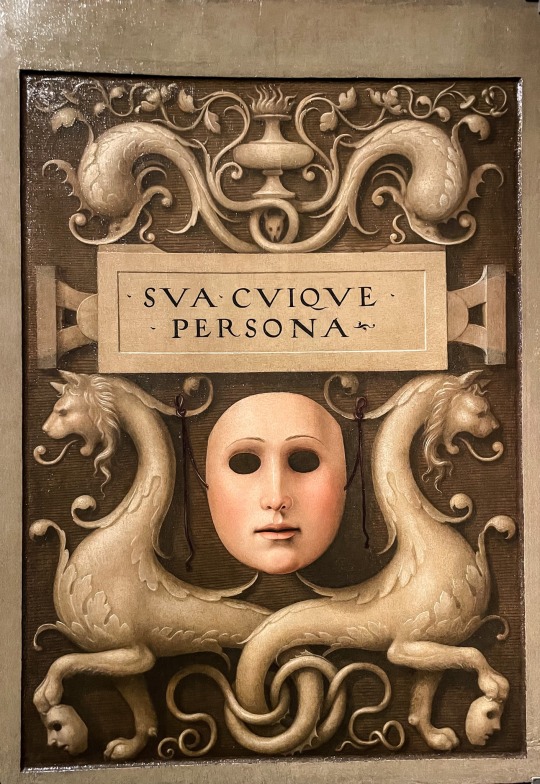


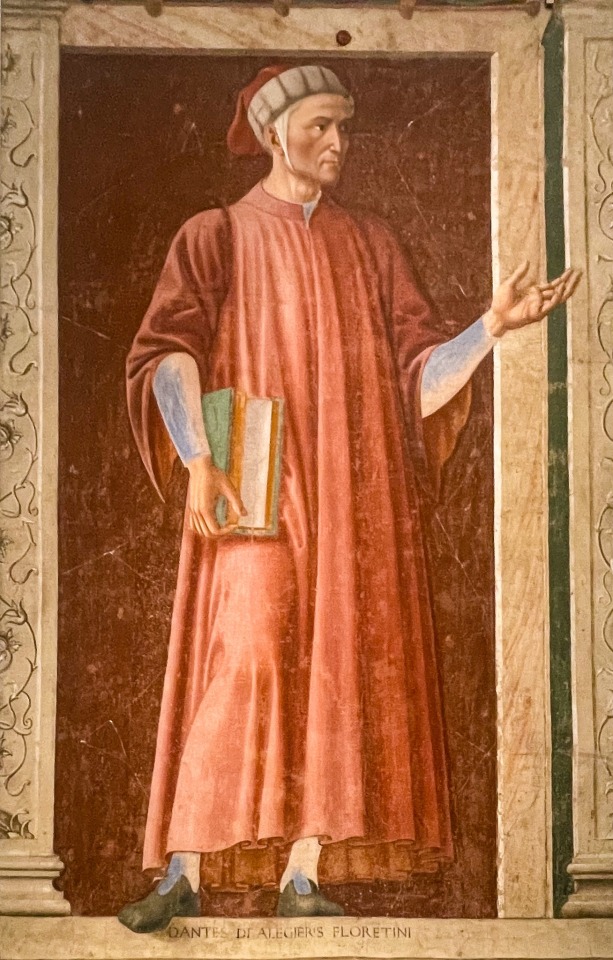
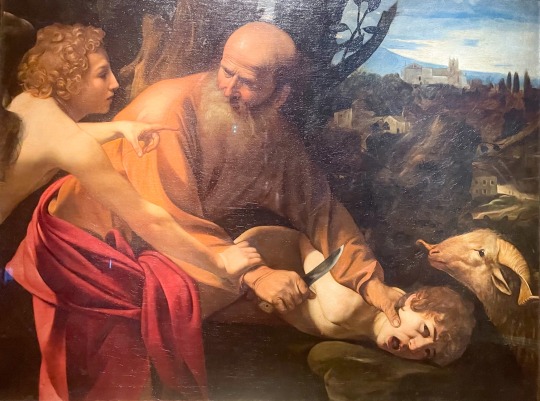
My favorite artworks of the Galleria degli Uffizi (Italy, Florenz):
La nascita di Venere- Sandro Botticelli, (1468)
La Primavera- Sandro Botticelli, (1480)
Coperta di ritratto con grottesche- Giuliano Bugiardini, (1510)
Un libro miniato- Scuola tedesca, (first quarter XVI century)
Annunciazione- Leonardo da Vinci, (1472–1476)
Dante- Andrea del Castagno (1448-1449)
El sacrificio de Isaac- Caravaggio (1603)
3 notes
·
View notes